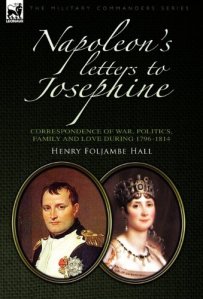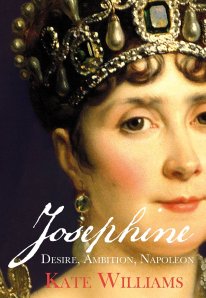 On the 10th of January 1810, the divorce ceremony of Napoleon Bonaparte and his wife Joséphine was performed as a grand social gathering, with each of the parties reading out a statement of devotion to the each other. A year prior to that, after a tense dinner together, Napoleon had announced to Joséphine that he had his mind set on separation. The emperor had long desired a son who would succeed him and continue the Bonaparte dynasty, but Joséphine, a widow six years his senior and already mother-of-two had been unable to provide him with a heir in their fifteen years together. Although their relationship was an unusual power-struggle with mutual distrust and infidelities, it seemed to have run deep and their separation had a heavy impact on both of them.
On the 10th of January 1810, the divorce ceremony of Napoleon Bonaparte and his wife Joséphine was performed as a grand social gathering, with each of the parties reading out a statement of devotion to the each other. A year prior to that, after a tense dinner together, Napoleon had announced to Joséphine that he had his mind set on separation. The emperor had long desired a son who would succeed him and continue the Bonaparte dynasty, but Joséphine, a widow six years his senior and already mother-of-two had been unable to provide him with a heir in their fifteen years together. Although their relationship was an unusual power-struggle with mutual distrust and infidelities, it seemed to have run deep and their separation had a heavy impact on both of them.
Allegedly, upon learning of Napoleon’s decision to divorce, the empress suffered a nervous fit and fainted, and had to be carried back to her chambers by her husband and his aide. The day after the divorce, as she wept at Malmaison, Napoleon went to console her and the couple walked hand-in-hand in the rain. Bonaparte’s name was on Joséphine’s lips when she died in 1814, aged 51 of pneumonia (but her maid said that she died of grief), and her name was uttered by Napoleon on his deathbed in exile on St Helena seven years later. While in exile on Elba, he read about her death in a journal and is said to have locked himself in his bedroom for two days, refusing to see anyone. He claimed to a friend that “I truly loved my Joséphine, but I did not respect her.”( Felix Markham, Napoleon, 1992).
Whilst for most of us love equals respect, just as the rights of men equal those of women, Napoleon had a different view. If these were indeed his words, they were rather telling of his generalised view of women. Proof of which were the laws of his Napoleonic Code, or The French Civil Code 1800-1820, which caused quite a setback to aspirations of female equality. In “The Wife is Obliged”, Napoleon reaffirmed the legal right of men to control women. For instance, a woman could demand divorce only in case the husband moved his concubine into their common residence, but she could not remarry until after 10 months from the dissolution of their marriage! The Code dictated that married women in particular owed their husband obedience in all life matters, and were forbidden from selling, giving, mortgaging or buying property. Napoleon allegedly proclaimed: “Women ought to obey us. Nature has made women our slaves!” This backlash to women’s rights had consequences throughout Europe. In military campaigns, Napoleon carried the Code throughout Europe, where it served as a model to legislators in countries from Italy to Poland. Within France itself, the Code survived basically unaltered for more than 150 years. Only in 1965 did French wives get the right to work without their husband’s permission. Only in 1970 did husbands forfeit the rights that came with their status as head of the family. In many ways, the Code was the most enduring legacy of the French Revolution.
Napoleon’s divorce from Joséphine was in reality a double annulment and the climax of more than two years of speculation, gossip and negotiation which kept leading European courts and governments concerned with France’s innermost troubles. Napoleon and Joséphine both came under intense pressure to ensure the succession of the Bonaparte dynasty; therefore their union was first dissolved in the Senate and finally annulled by the Diocesan and Metropolitan tribunals. “The events during this period not only cover some of the major preoccupations of Napoleon and the French state – dynasty durability and stability, France’s relationships, both with the major political powers on the continent and with the Catholic Church – but also touch on more social issues – the legal basis of marriage in the 19th century – and some of the more complicated aspects of Canon Law.” (Fondation Napoléon 2008)



